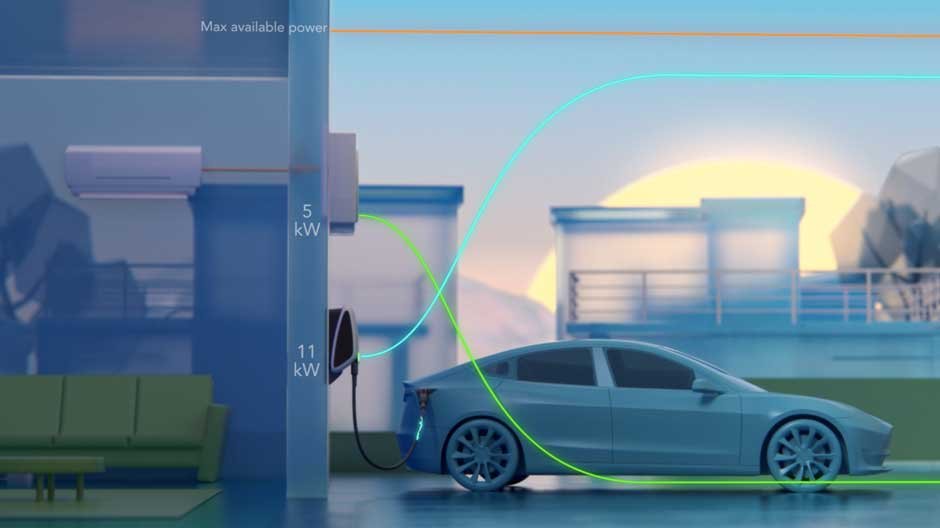Smart charging is managing and distributing power consumption across one or more charging stations. This can prevent peak power consumption. And that is important, because it prevents the need to upgrade the electricity grid. And that in turn saves us all money….
Increasingly higher peaks
The grid operator is responsible for a power grid that has sufficient capacity for all of our electricity consumption. And that means that the power grid must be designed to handle power peaks, even if those peaks occur infrequently. The big peaks are currently around breakfast and dinner.
The energy transition threatens to make the peaks higher and higher: we will heat more homes electrically, we will cook on induction, and there will be more electric cars that need charging. Note: this last group is expected to account for only 20% of total consumption: more on that here.
If the peaks in power consumption can become lower, it is better for all of us. Because less expansion or reinforcement of the electricity grid will then be needed. And thus less investment. This is why more and more use is being made of ‘smart’ charging: a system that allows peaks to be reduced.
Smart charging
So smart charging is basically distributing or managing the available power across one or more charging points. For example, there are private charging stations that can charge smartly, such as through Load Balancing. This involves measuring the maximum power consumed by a home. With that information, the system controls that charging is done with less power, or even postponed until times when less power is consumed.
But the same principle can be applied to multiple charging stations. For example, Power Sharing is another example of smart charging. An office building or apartment complex that has multiple chargers can then also share power, for example. Whereby the current electrical “older” cabling can still suffice just fine.
Large-scale smart charging is also possible. Then, for example, public charging points are monitored and managed at geographically different locations. They are connected to the Internet for this purpose, and centrally the distribution of power is monitored. Depending on the total power demand of the poles themselves, or even of an entire neighborhood, for example.
With EV charging stations dataset providers of maps, like TomTom or Google, can tell you where to charge your car. It won’t tell us if you can ‘smart charging’ your car. Improve EV charging infrastructure with the data.

